How to Make an Adventure of the Farmers Market with Kids
Damaris Bonner, Education Coordinator
April 21, 2023
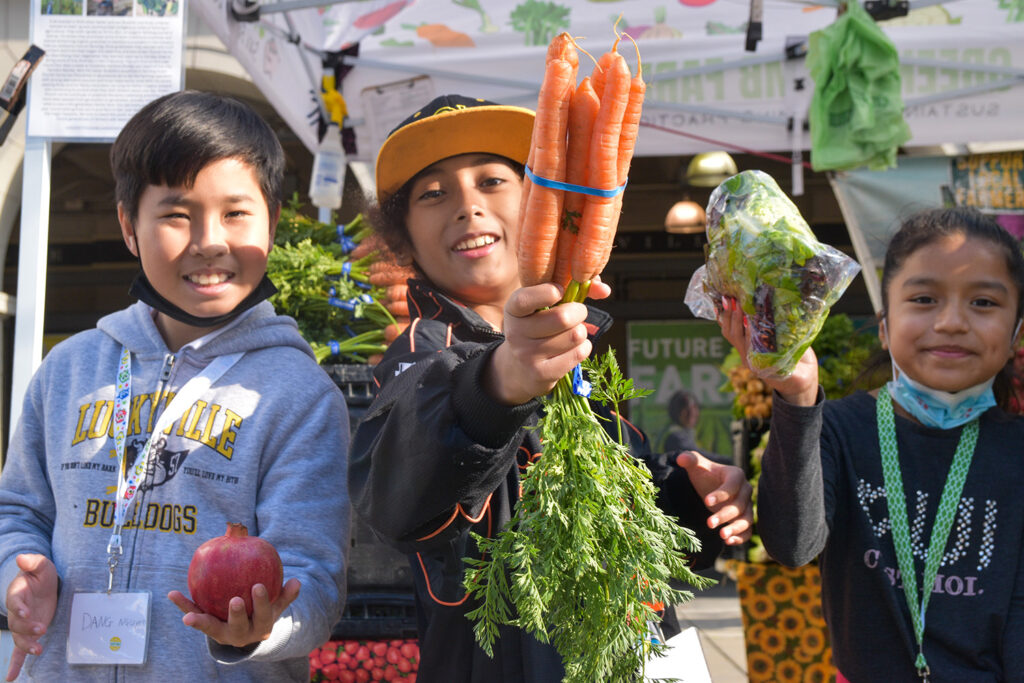
Picture it: You’re a third-grade student arriving at the Ferry Plaza Farmers Market at 10:00 am on a Tuesday morning, and you’re overcome with the sights and sounds around you. There’s the hustle-n-bustle of folks walking around, the vibrant display of fruits and veggies, and the cable car bell ringing in the background. As you take it all in, you see a lady approaching your class, waving with a big ol’ smile and joyously welcoming you with a “good morning!” That lady is me, Damaris Bonner, the Education Coordinator for Foodwise Kids.
Being in this role for almost two years now, I have learned that kids feel more comfortable exploring the market and trying new foods when we prepare them. It’s not a lot of work. Rather, it’s about reassuring them that it’s going to be a fun adventure, and that they will have agency in their decisions. If you are a parent who is seeking some advice on how to get your child interested in eating fruits and vegetables and nurturing their curiosity in food, then this article is for you! I will share some simple ways to explore the farmers market together with an openness to tasting all delicious foods within.
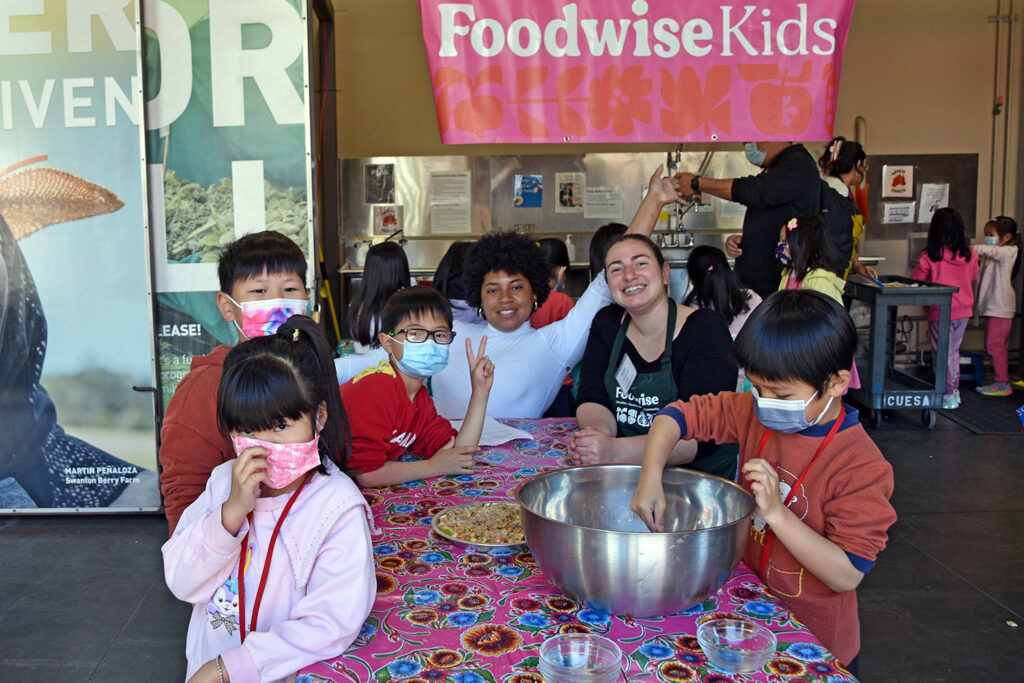
Start with Some Farmers Market Vocabulary
First things first. When a class joins us at the market, we always try to set the stage by introducing these four vocabulary words to help them understand what a farmers market is, and what makes it different than shopping at a regular grocery store:
- Local: The food is grown or made near you.
- Fresh: The food is harvested or made and brought to you as soon as possible.
- Seasonal: Food changes with the seasons.
- Variety: This can refer to a diverse range of fruits and vegetables, or a variety of the same fruit or vegetable item (think of your different types of apples, like Fuji or Granny Smith).
If you have a younger child (elementary school aged), write down each of these words and their definitions on a piece of paper. Then, ask your child to sound out each word and read the definition together. Keep in mind that younger kids may not always remember the definition of each word, but you can reinforce their meanings by using them in proper sentences while shopping at the market.
If you have older kids, encourage them to speak with the farmer or vendor and ask them questions related to the words above (For example: Where is your farm located? When did you pick this? What’s in season at your farm? Do you grow a lot of varieties of ____?) .
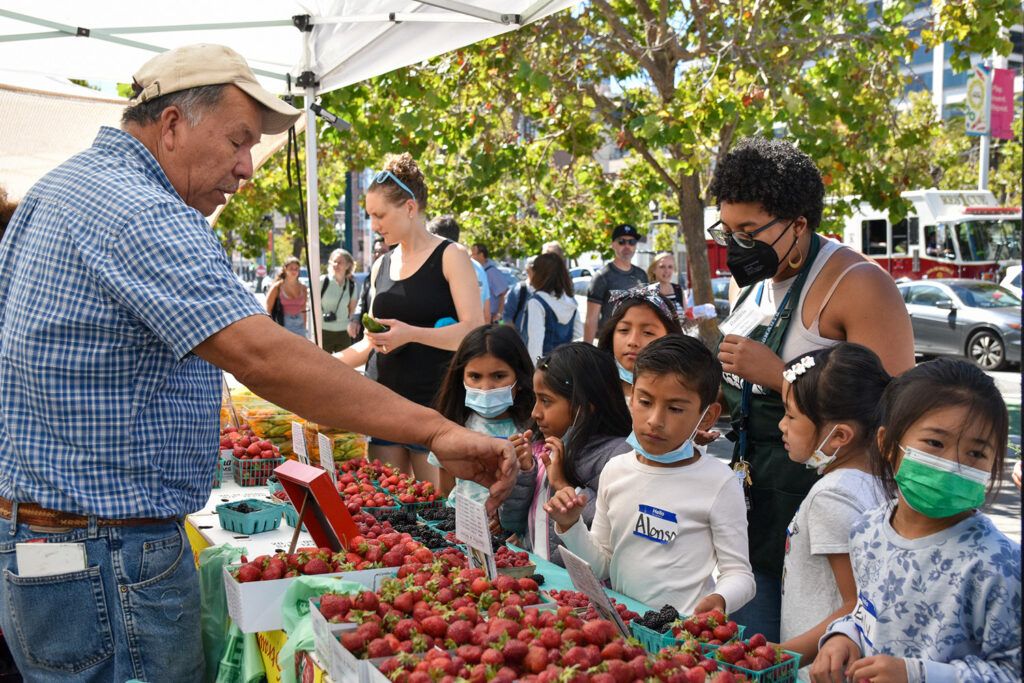
Encourage Them to Use Their Five Senses
Believe it or not, we use all five senses when trying new foods. When Foodwise Kids classes are here for a tasting at the market, I encourage them to use all of their senses before trying the produce. I ask them:
- See: What does the fruit look like? What colors do you see?
- Touch: Is it smooth or bumpy? Hard or soft?
- Smell: What does it smell like?
- Hear: Do you hear anything when you bite down?
- Finally, taste! What flavors do you taste? What does it taste like or remind you of?
As you’re exploring the market with your child, you might also ask them: What fruits and vegetables do you see? What sounds do you hear? And when it comes time to sit down and eat a snack, you can ask them: What are you smelling in the food? Is it hot or cold? The list goes on!
We sometimes find that younger kids tend to stick with judgment words like “good” or “nasty,” so you might explore different questions to help them describe what they are eating, like: What’s the texture? Is it spicy, salty, bitter, or sweet? Is it dry, gooey, crunchy, or mushy?
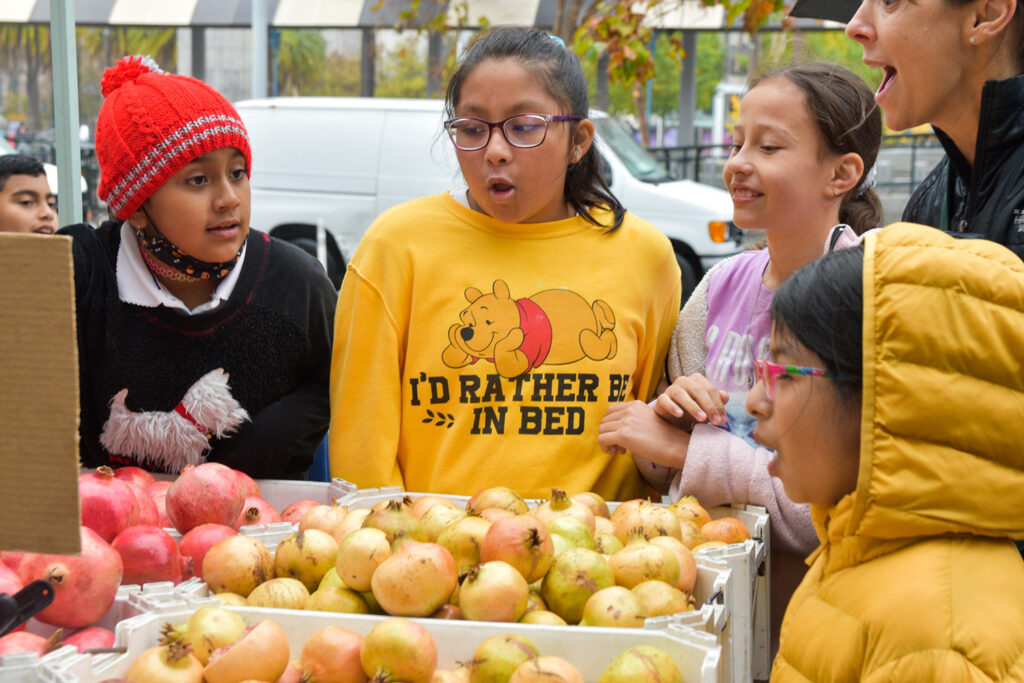
Most Importantly, Explore with Curiosity and an Open Mind
At Foodwise Kids, one of our guiding principles is supporting kids to approach the market (and fruits and veggies) with curiosity and an open mind.. Before I send students out into the market during our field trips, I ask them “What does it mean to be curious and to have an open mind?” It’s crucial that you ask such a question because kids tend to stay within their comfort zone when trying new things.
In a 2021 article published by Rise and Shine (part of the Children’s National Hospital), Dr. Allison Silva advises that babies and kids may need to be offered new foods 10 to 15 times (over the course of several months) before they start to like them. So, be patient! She also encourages parents to make it a routine to include fruits or veggies in every snack or meal to continue that exposure. You can motivate them to keep trying new things by sparking their curiosity with questions, and encouraging them to have fun while doing so.
Here are a few ways you can inspire your child to be open-minded:
Closed Mind vs. Open Mind Activity
- Ask your child to put a “door” over their mind. Let them know that this represents being closed-minded. It means that you’re being negative, you’re closing yourself off to new things, and you’re not being fun.
- Now ask them to open that “door.” Explain that when you’re open-minded, you are interested in trying new things, you ask questions, and most importantly, you have fun!
If you have an especially picky eater, the UCSF Benioff Children’s Hospitals advises “sharing responsibilities” with your child: “You control what, where and when food is provided. Your child decides whether or not to eat the food, and how much to eat.” This rings true for us at Foodwise Kids, as we never force students to eat all the produce we buy at the market together. From my experience, when you try to force a child to eat something new you will receive a lot of pushback, and it is no fun for either person. Instead, try the following exercises.
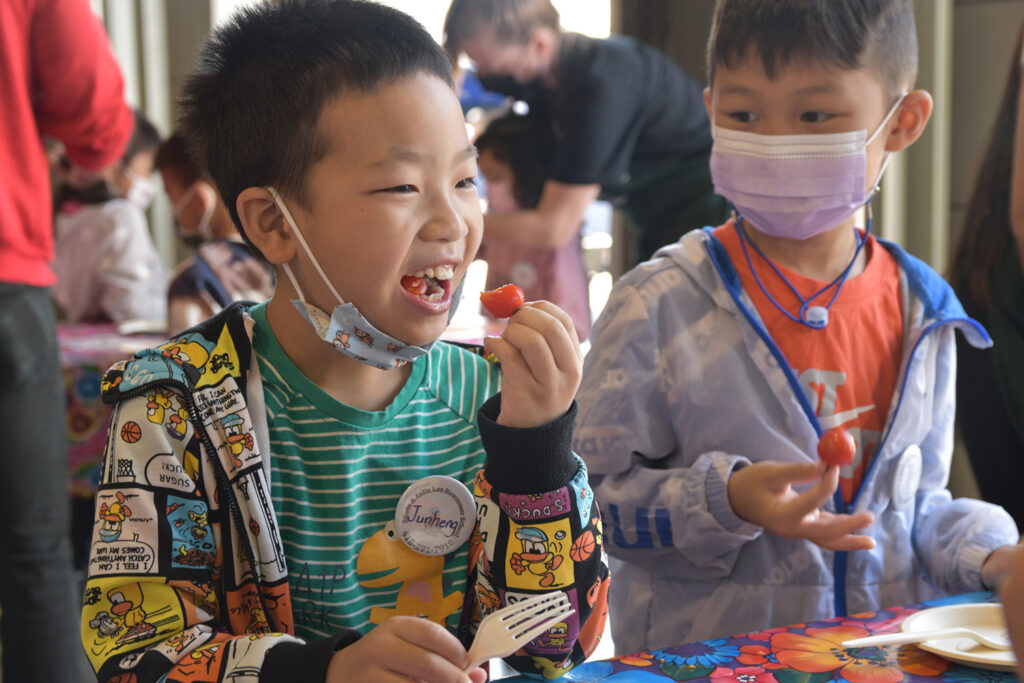
One Bite Club
When kids are reluctant to try something new, you can ask, “Do you want to be a part of the “One Bite Club?” If they say yes, encourage them to have just one bite…that’s it! Just one bite or sip. If they don’t like it, then at least they tried it. But if they loved it, then encourage them to have another bite and another until they’ve gobbled it all up!
Don’t Yuck My Yum
This is a great tool for teaching kids about respecting a person’s likes and dislikes. As mentioned earlier, when kids like something, they tend to just stick with phrases like “yummy” or “good.” However, when they don’t like something, they’ll often say (very loudly in our case) “eww!” or make little gagging noises. So, to move past that:
- Ask them, “Do you know what ‘Don’t yuck my yum’ means?” Let them take a guess and, if they need help, you can let them know that this means it is not nice to say “eww,” “yuck,” or “gross” to things that our friends may be enjoying.
- Remind them that it is okay to not like something. As humans, we all like different things. However, that’s no excuse to be rude. Have them practice saying things like, ”no thank you” or “it’s not for me.”
As simple as these exercises may be, they can go a long way in encouraging kids to step out of their comfort zone. But what is most important is that you, as an adult/parent/guardian/teacher, also practice open-mindedness. Understand that some kids are more adventurous, while others are not. So please, be a model for what it means to be open-minded.
Kids are the next generation of eaters and leaders within our food systems. It is up to us to prepare them to feel ready in their food journeys, and so I invite you to use these tips! You can learn more about Foodwise Kids here, and please share your questions and tips with us at .

Topics: Family, Farmers market, Foodwise Kids, Youth
